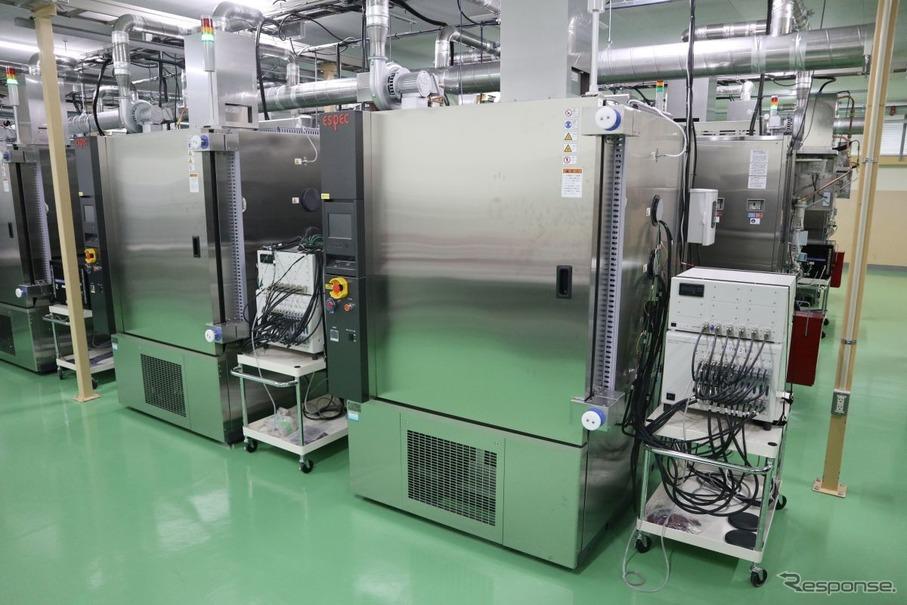What kind of performance tests do EV batteries do ... Tour Battery Safety Certification Center
Espec is one of the top manufacturers of environmental testers.Since 2015, the Battery Safety Certification Center has been opened, and various tests and performance tests have been conducted.In recent years, there are many tests for EV batteries, and the special equipment has responded to needs.
I had the opportunity to see the inside of the Espec battery safety certification center.Report the situation.
In Espec, the UN ECE R100-02 "UN ECE R100-02 is" UN ECE R100-02 in a secondary battery due to a business alliance with Tufsuudi Japan..There are facilities that can verify all nine test items corresponding to "Part II".EV batteries are cell size, packed size, so that it is greater than mobile phones and PCs, so test chambers (constant temperature tanks) and bunkers (concrete buildings) are dedicated.
A typical chamber looks like a commercial refrigerator that can control temperature.Attach a control unit that repeats charging and discharge to this, and perform aging tests for cells and modules inside.There is also a chamber that can log in aging and change in impedance with a machine like a data logger.The normal environment test device is a lever -type lock door, but the battery test chamber has two or more screw -type locks.The battery is at risk of ignition and explosion.
Lithium -ion battery fire is said to be difficult to extinguish fire.Because it is a lump of energy with many cells, it is difficult to inactive the whole.Even if the ignition is reduced, it will ignite immediately if there is energy, and once the broken structure may fire and explode in a chain.Anyway, the temperature is reduced, and the water is discharged or inactivated by liquid nitrogen.

The battery chamber and bunker of the battery safety authentication center always have a fire extinguisher of liquid nitrogen.Oxygen supply can also be blocked for fire extinguishing by liquid nitrogen.
Other than temperature tests and charging and discharge tests, falling tests, vibration tests, corruption tests, thermal impact tests (switching at low temperature and high temperature rapidly), nail tests, short -circuit tests, high -voltage / low pressure tests, submerging / salt and submerging tests.There are facilities to do so.
Even in a simple charging and discharge test, EV batteries are both large and output, so the chamber itself is large.The fire extinguishing facilities are as described above, but the power supply equipment has been increased by 100Ah.The device for testing external shorts (short circuit) has a huge circuit breaker of 200,000 A.
It seems that the pressure test can apply 100 knm pressure.The pressure -applied battery has an unstable inside, so it must be completely inactivated (inactive) even if it is not ignited.It is said that the device for the deterioration test is performed by applying pressure to 1000 KNM and inactivating.
The rooms performing these tests have a structure called the damper room, covered with a concrete wall on a iron door.There is also a vent mechanism for removing pressure on the ceiling.
All of these examinations are une R100-02.It is performed to get the data of the items specified in Partii, but the difference in the battery is not taken into account.It only evaluates safety performance as a secondary battery.Apart from the general theory that LFP is harder to ignite than NMC, a certified battery meets a certain standard, so it is not dangerous or safe.
However, the test items and conditions vary depending on the policy of the manufacturer and the internal safety standards.The risks should be different between manufacturers who need to meet the UN standards and manufacturers who are testing with more standards.
At present, there is no authentication logo system, such as the "technical" (PSE mark), for automotive batteries.Battery manufacturers and automakers are guaranteed quality by saving and publishing data sheets measured by third -party certification organizations such as the center and Tuf Group.